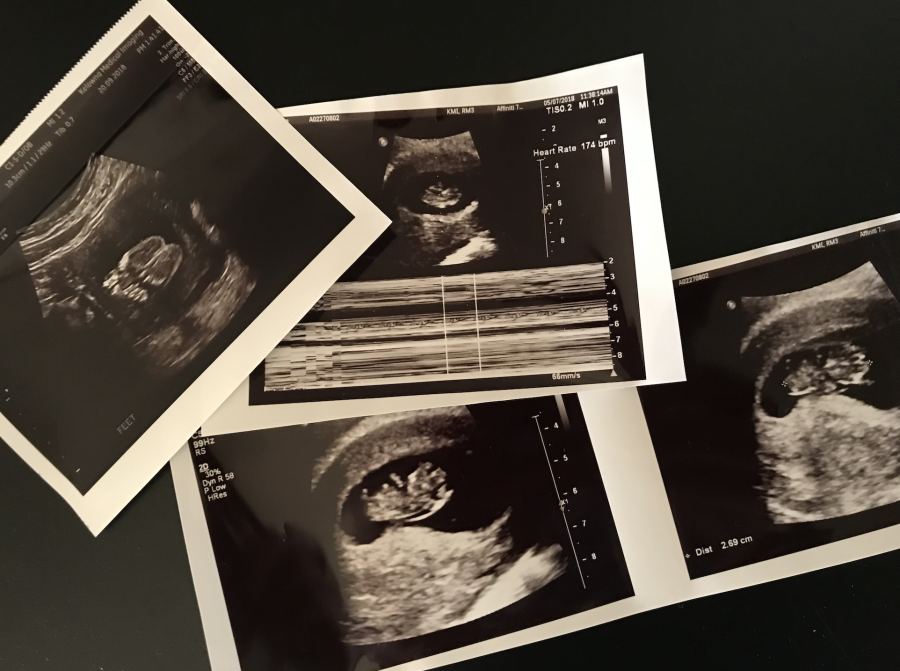How does an Ultrasound work?
An ultrasound procedure consists of a high-frequency sound wave that is inaudible to humans. These waves are emitted from a probe and then reflected off your body tissue. The echos are recorded and then relayed back to the machine.
The ultrasound machine then calculates the distance between the probe and the body tissue and uses this measurement to display an image.

Most pregnant women will get the opportunity to have at least two ultrasound appointments. The first appointment is usually at between 10 and 14 weeks, whereas a second ultrasound usually occurs between 18 and 20 weeks.
Most ultrasound appointments last between 30 and 60 minutes. During this time, a technician at the clinic takes photos and records measurements. Don’t be disappointed if the technician can’t answer any specific questions or give you any additional information. After the session, the photos and data will then be sent to a radiologist where it will be interpreted, and a report will be written that will be sent to your primary care giver’s office within a day or two.
Uses of Ultrasound During Pregnancy
1. Estimating Your Due Date
Your first ultrasound helps your primary care providers predict when your baby will be born as the fetus will be measured during this appointment.
2. Determining the Number and Sex of Babies
An ultrasound can be helpful in determining women who are expecting multiple babies. If twins, triplets or more are expected, additional scans may be offered. During the second trimester ultrasound, the technician may be able to report the sex of the baby, if desired.

3. Tracking Growth and Development
An ultrasound report is a tool to monitor growth and development of the fetus. Although scans are never perfect, abnormalities can be suspected and noted on an ultrasound report for the primary care givers to decide on what the next step is. Thankfully, flagged conditions usually turn out to be insignificant.
4. Locating the Placenta
Getting an idea of where the placenta has implanted within the uterus is helpful in case the birth plan has to be adjusted accordingly.
Are There Risks Associated with Ultrasounds?
The World Health Organization supports the limited use of ultrasounds for expectant mothers as research has shown that information gained from the procedure outweighs potential risk to the baby. Although extra ultrasounds may be offered to women who may be experiencing an atypical pregnancy pattern, unnecessary ultrasounds are not recommended.
We invite pregnancy experts and other moms-to-be to join in on the conversation! Reach out if you have topic suggestions for this column on Instagram, Twitter, Facebook or email me at KelownaNow.
















